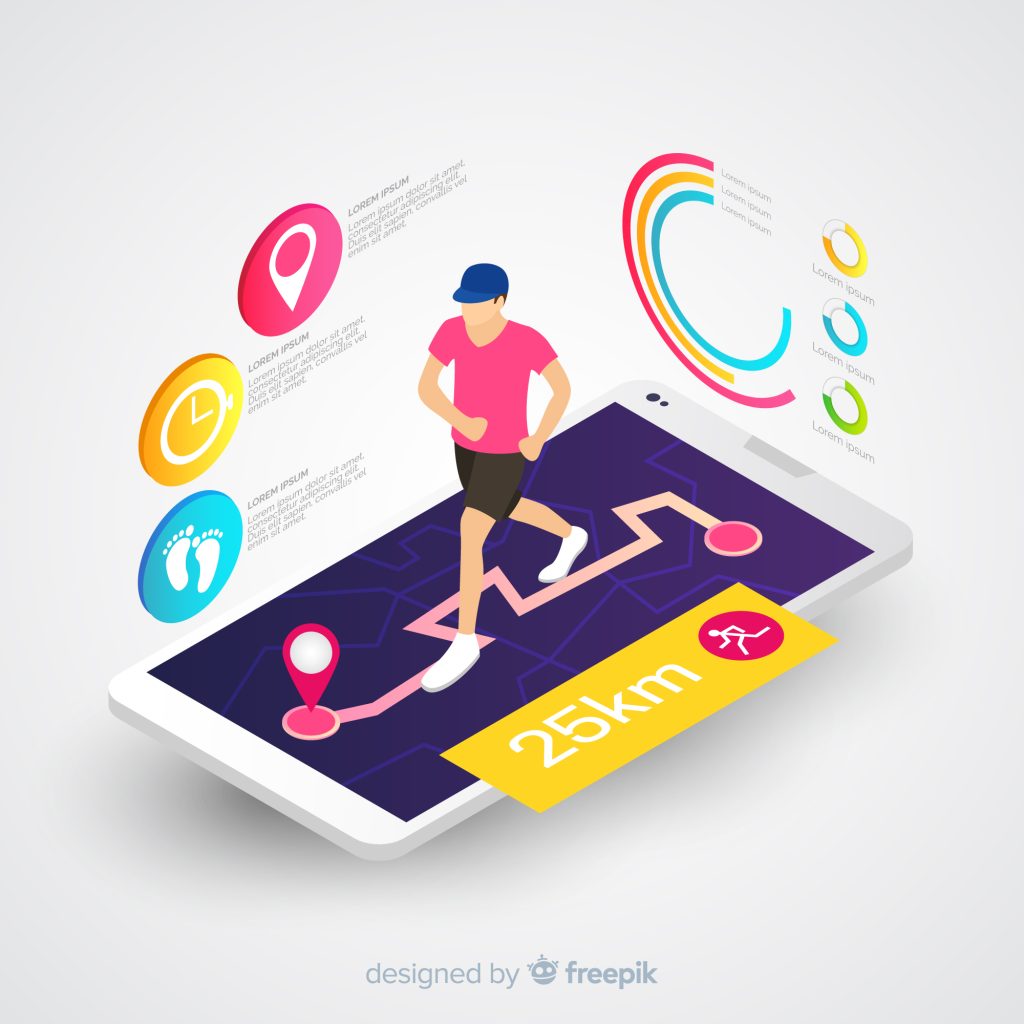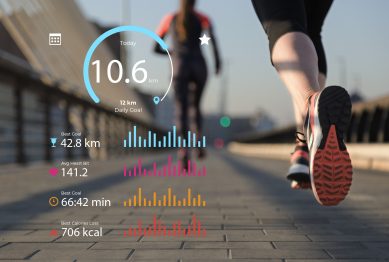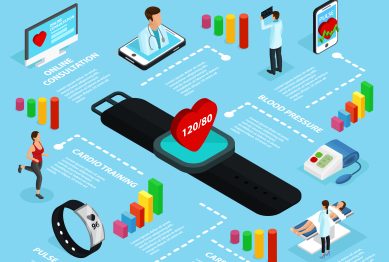In 2025, fitness apps that track health progress are no longer simple step counters or calorie trackers—they’ve evolved into personalized health companions. With the rise of wearable technology, AI-driven recommendations, and integrations with healthcare providers, these apps are reshaping how people monitor and improve their well-being. Whether you’re training for a marathon, managing chronic conditions, or simply aiming to stay active, the latest generation of fitness apps provides deeper insights and more accountability than ever before.
This article explores the latest trends in fitness apps that track health progress, practical ways to use them effectively, and how emerging technologies are shaping the future of personal wellness.

Why Fitness Apps That Track Health Progress Are Booming
Several cultural and technological shifts have fueled the popularity of health-tracking apps:
- Wearables and smart devices: According to Statista (2024), more than 1.4 billion people worldwide now use wearable devices, most of which sync seamlessly with health apps.
- Preventive health focus: A growing emphasis on lifestyle-driven prevention has increased demand for continuous health monitoring (World Health Organization, 2024).
- AI and personalization: Apps now provide personalized workout, nutrition, and recovery plans based on user data, making them far more effective than one-size-fits-all solutions.
- Integration with healthcare: Some fitness apps now allow users to share progress directly with doctors, making self-tracking part of mainstream healthcare.
The result is a booming global fitness app market projected to surpass 20 billion by 2030 (Fortune Business Insights, 2024).
Emerging Trends in Fitness Apps That Track Health Progress
1. AI-Powered Coaching
AI has transformed fitness apps from passive trackers into active coaches. Platforms like Fitbod and Freeletics use algorithms to create adaptive workout plans, adjusting exercises based on performance, fatigue, and recovery data. Instead of static routines, users now benefit from personalized plans that evolve in real time.
2. Mental Health Integration
In 2025, fitness apps recognize that wellness is more than physical health. Apps like Headspace Move and Calm integrate exercise with mindfulness, while platforms such as WHOOP and Oura track stress, sleep, and recovery alongside physical performance. This holistic approach reflects growing awareness of the connection between mental and physical health.
3. Community and Social Features
Social accountability remains a powerful motivator. Apps like Strava and MyFitnessPal now offer gamified challenges, friend groups, and community leaderboards. These features encourage consistency while transforming workouts into social experiences.
4. Biomarker Tracking
Beyond steps and calories, new apps measure advanced health markers. Wearables synced with apps like Apple Health and Garmin Connect can track heart rate variability (HRV), blood oxygen levels, glucose (with compatible sensors), and even menstrual cycle trends. This gives users a more complete view of overall health.
5. Integration With Healthcare Systems
In countries with advanced digital health infrastructure, fitness apps now connect to electronic medical records. For instance, Apple’s Health app can integrate with hospital systems in the U.S., allowing physicians to monitor patients’ daily activity or recovery progress. This trend represents a step toward personalized healthcare.
How to Use Fitness Apps That Track Health Progress Effectively
Having a fitness app on your phone isn’t enough—it’s how you use it that makes the difference. Here are practical ways to maximize their impact.
1. Set Clear Goals
Whether it’s losing weight, increasing endurance, or improving sleep quality, apps are most effective when tied to measurable objectives. Use SMART goals (Specific, Measurable, Achievable, Relevant, Time-bound) to define your targets.
2. Sync Across Devices
For a complete health snapshot, connect your app with wearables and smart devices such as Apple Watch, Fitbit, Garmin, or Oura Ring. This ensures continuous data collection for accurate progress tracking.
3. Monitor Multiple Metrics
Don’t just focus on steps or calories. Explore sleep scores, heart rate trends, stress levels, and recovery metrics. These broader insights provide a more holistic understanding of your progress.
4. Use Community Features
Join challenges or groups within your app. Studies show that social support increases adherence to fitness routines (American College of Sports Medicine, 2024). Engaging with a community helps maintain accountability and motivation.
5. Review and Adjust Regularly
Apps provide weekly or monthly reports—use them to adjust routines. If progress stalls, tweak your workouts, sleep, or nutrition plan based on insights from the app.
Top Fitness Apps That Track Health Progress in 2025
While the market is full of options, several apps stand out for their innovation and effectiveness in 2025.
1. Apple Fitness+
Apple Fitness+ continues to dominate with seamless integration into the Apple ecosystem. It offers guided workouts, real-time health metrics via the Apple Watch, and integration with mindfulness practices.
2. WHOOP
WHOOP is subscription-based and highly focused on recovery and performance. It tracks sleep cycles, strain, and recovery metrics, helping users optimize training intensity.
3. MyFitnessPal
A long-time favorite for nutrition tracking, MyFitnessPal has expanded its features with AI-driven meal suggestions, barcode scanning, and integration with nearly every major wearable.
4. Strava
Originally built for runners and cyclists, Strava has evolved into a community-based fitness app covering multiple sports. Its heatmaps, performance tracking, and social features make it especially popular among outdoor athletes.
5. Fitbod
Fitbod uses AI to create personalized workout plans based on user goals, fitness level, and available equipment. It’s ideal for strength training and gym users who want tailored routines.
6. Oura
Oura’s app, paired with its smart ring, focuses heavily on sleep, readiness, and recovery. It has become popular among professionals and athletes who prioritize recovery as much as training.
Challenges and Concerns
While fitness apps that track health progress offer enormous benefits, users should remain aware of challenges:
- Data privacy: Health data is sensitive. Users should review privacy policies before sharing biometrics.
- Over-reliance: Apps provide valuable guidance, but they shouldn’t replace professional medical advice.
- Subscription fatigue: Many apps require monthly fees, and costs can add up quickly.
- Accuracy issues: Wearables and sensors, while improving, may still produce inconsistent readings, particularly for advanced metrics like calorie burn or glucose monitoring.
The Future of Fitness Apps That Track Health Progress
Looking ahead, fitness apps will become even more integrated into daily life. Key future directions include:
- Personalized health insurance: Insurers may offer premium discounts for app users who meet activity benchmarks.
- Predictive health analytics: AI could identify risks for injuries or chronic conditions before symptoms appear.
- Virtual reality fitness: Combining VR with tracking apps to create immersive, measurable workouts.
- Global accessibility: As smartphone adoption grows in developing countries, affordable fitness apps will expand global health access.
Conclusion
Fitness apps that track health progress are at the center of the digital health revolution in 2025. With AI coaching, community-driven features, biomarker tracking, and healthcare integration, these tools empower individuals to take control of their well-being like never before.
By setting clear goals, syncing devices, monitoring multiple metrics, and leveraging social accountability, users can maximize results. While challenges such as data privacy remain, the benefits of consistent tracking, personalization, and motivation are undeniable.
As technology continues to evolve, fitness apps will move beyond tracking toward becoming proactive partners in long-term health. For anyone serious about improving fitness and overall well-being, now is the ideal time to embrace these innovations.
References
- Fitness App Market by Platform, https://www.360iresearch.com
- Fitness App Market Size, Share & Trends Analysis Report By, https://www.grandviewresearch.com
- The Fitbit App Is Turning Into an AI-Powered Personal Health Coach, https://www.wired.com









